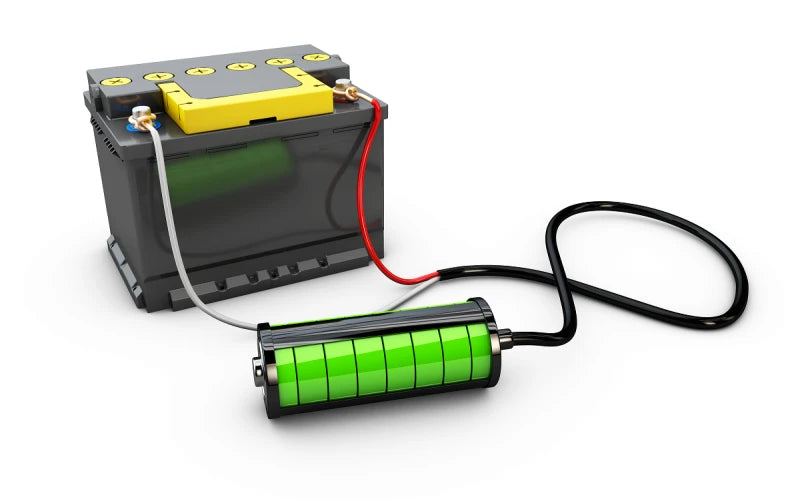
As solar energy continues to gain popularity as a sustainable power source, the demand for efficient and reliable energy storage solutions has also increased. AGM batteries, also known as Absorbent Glass Mat batteries, have emerged as a popular choice for solar energy storage. However, there is often confusion surrounding the ventilation requirements for AGM batteries. In this blog post, we will delve into the topic and answer some essential questions: Do AGM batteries need to be vented? What happens if you don't vent an AGM battery? Do AGM batteries emit dangerous gases? Let's find out!
What are AGM Batteries?
Before we dive into the topic of ventilation, let's first understand what AGM batteries are. AGM batteries are a type of valve-regulated lead-acid (VRLA) battery that uses a special construction to store and deliver electrical energy efficiently. The key differentiating feature of AGM batteries is the presence of an absorbent glass mat separator, which holds the battery's electrolyte in place. This design eliminates the need for a free-flowing electrolyte, making AGM batteries spill-proof and maintenance-free. These characteristics make them an excellent choice for applications where safety, durability, and deep cycling capability are crucial, such as solar energy systems.
Do AGM Batteries Need to be Vented?
The straightforward answer to whether AGM batteries need to be vented is no. Unlike conventional lead-acid batteries, AGM batteries are designed as sealed units, meaning they do not require external ventilation. The construction of AGM batteries incorporates a valve system that regulates the pressure inside the battery. This valve allows for the release of excess gases produced during charging, preventing any pressure buildup that could potentially damage the battery.
What Happens If You Don't Vent an AGM Battery?
Although AGM batteries do not require external ventilation, it is essential to understand the consequences of not properly venting them. If an AGM battery is not vented, excess gas buildup can occur inside the battery. This gas buildup can result in increased pressure, which may eventually lead to the battery swelling or even rupturing. Additionally, the performance and lifespan of the battery may be negatively affected due to the accumulation of gaseous byproducts.
Do AGM Batteries Emit Dangerous Gases?
While AGM batteries do emit gases during the charging process, these gases are generally not considered dangerous. AGM batteries primarily emit oxygen and hydrogen gases, which are byproducts of the chemical reactions occurring within the battery. However, the quantities of these gases produced by AGM batteries are relatively small and not typically hazardous under normal operating conditions.
Do AGM Batteries Emit the Same Gases as Conventional Lead-Acid Ones?
AGM batteries and conventional lead-acid batteries both produce gases during the charging process. However, the types and quantities of gases emitted differ. Conventional lead-acid batteries primarily release hydrogen gas, which is highly flammable and can pose safety risks if not handled properly. On the other hand, AGM batteries emit a mixture of oxygen and hydrogen gases. While hydrogen gas is present, the amount is typically much lower than in traditional lead-acid batteries. This reduced emission of hydrogen gas contributes to the improved safety characteristics of AGM batteries.
How to Vent an AGM Battery?
As mentioned earlier, AGM batteries do not require external ventilation. However, it is still crucial to provide adequate space and ventilation around the battery to ensure efficient heat dissipation. This practice helps maintain optimal operating temperatures, prolonging the battery's lifespan and performance.
Here are a few guidelines to consider for proper ventilation of AGM batteries in solar energy systems:
1. Placement: Install AGM batteries in a well-ventilated area, avoiding enclosed spaces or areas with restricted airflow.
2. Clearances: Leave sufficient clearance around the battery to allow for air circulation and dissipation of heat. Refer to the manufacturer's guidelines for recommended clearances.
3. Temperature Control: Ensure the ambient temperature around the battery remains within the recommended operating range specified by the manufacturer.
4. Battery Enclosures: If using an enclosure for the battery bank, choose one specifically designed for AGM batteries and ensure it has proper ventilation features, such as vents or fans.
Conclusion
AGM batteries are a popular choice for solar energy storage due to their numerous advantages, including safety, durability, and maintenance-free operation. Unlike conventional lead-acid batteries, AGM batteries do not require external ventilation. However, it is still essential to provide adequate space and ventilation around the battery to ensure efficient heat dissipation and maintain optimal performance. By following the recommended guidelines for ventilation, you can maximize the lifespan and reliability of your AGM battery system while enjoying the benefits of clean and sustainable solar energy storage.

0 comments